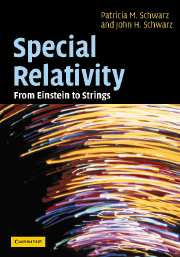Appendix 3 - Lie groups and Lie algebras
Published online by Cambridge University Press: 06 July 2010
Summary
Lie groups are continuous groups in which the group elements are labeled by continuous coordinates. Hence the groups are infinite. For example, rotations in three dimensions can be labeled by three coordinates. In this case one says the group is three-dimensional. The entire group forms a smooth space called the group manifold.
One can introduce a measure on the group manifold, which is invariant under either left or right multiplication by a fixed group element, and use it to define integration over the group manifold in a way that is compatible with the group structure. Denoting the measure by dg, one can define the volume of the group to be ∫Gdg. If the volume is finite, the group is said to be compact and if it is infinite the group is said to be noncompact.
A simple example of a compact Lie group is the group U(1), which consists of numbers (1 × 1 matrices) of the form eiα, where α is real. The group manifold is a circle in this case, and the invariant measure is (up to normalization) given by dα. Clearly, this is a compact group. Another Lie group, which could be denoted GL(1, R)+, consists of numbers of the form ex, where x is real. In this case the group manifold is the real line, the invariant measure is dx, and the group is noncompact.
- Type
- Chapter
- Information
- Special RelativityFrom Einstein to Strings, pp. 362 - 364Publisher: Cambridge University PressPrint publication year: 2004

